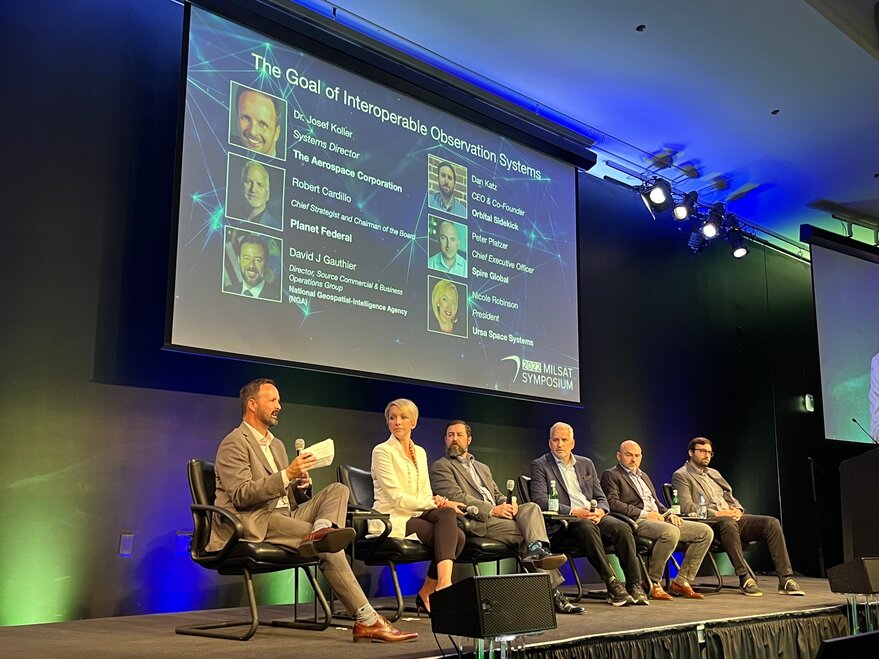MOUNTAIN VIEW, Calif. – In spite of progress, different Earth observation systems cannot exchange information easily.
“The way we are interoperable today is messy and time-consuming and annoying to the end user,” David Gauthier, National Geospatial-Intelligence Agency Source Commercial & Business Operations Group director, said Oct. 14 at the MilSat Symposium here.
A decade ago, U.S. government agencies largely viewed commercial Earth observation as an augmentation of government capabilities.
“We now see heavy reliance on commercial observation systems,” Gauthier said. “Because of that reliance, we need something more like a hybrid space architecture with interoperability by design as the basis of that capability.”
The Russian invasion of Ukraine in February and ongoing war is spurring government adoption of commercial Earth observation, including optical, synthetic aperture radar, radio frequency monitoring, multispectral and hyperspectral data.
The past eight months has offered “operational proof” of the value of commercial Earth observation, said Nicole Robinson, Ursa Space Systems president. “This capability has been tested in the most challenging of environments and has proven to be critical to revealing what’s happening in an environment where things are changing quite rapidly.”
There’s growing recognition of “almost the necessity of the private sector to partner with the public sector in tackling global challenges,” said Peter Platzer, Spire Global CEO.
Still, making government and commercial Earth observation systems interoperable remains challenging.
“We need to bring some simplicity to the design so that it works more like a plug-and-play architecture,” Gauthier said. “When you seek information it’s instantly available to you and the end user has the experience of not having to fight for integrated information or insights. They’re just available.”
Another challenge is trust.
“Once you start opening up your information supply chain to many more suppliers than we’ve ever had before, from many different parts of the ecosystem, more many countries, you open up a little bit of a concern when it comes to trusting all that information,” Gauthier said. “The complexity of the problem has increased.”
To build trust, government agencies can treat data like elements of any critical supply chain, validating each input. Gauthier pointed out another way to look at trust.
“More data from more places has an inherent creation of greater trust, because you are constantly corroborating information with other sources,” Gauthier said. “If I have 100 sources of information from 100 different places and one of them is corrupted, the 99 other ones are telling me that’s the case. I can trust the 99 and still be okay.”
Another issue is clearance. In most cases, Earth observation company employees lack the security clearances they would need to understand the problems their imagery and data would help government intelligence agencies solve.
“Trying to build an infrastructure that can deliver intelligence to the intelligence community as a commercial operator sometimes feels like we’re throwing darts in the blind,” said Dan Katz, Orbital Sidekick CEO and founder.
